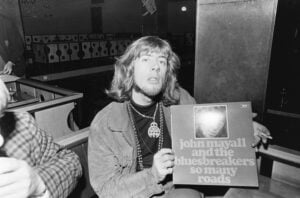On This Day in 1966: The Lovin’ Spoonful Awarded Gold Record for Their Fifth US Top Ten Single and First Number One Hit

via The Lovin' Spoonful - Topic / YouTube
Breakout Hit & Chart Success
In 1966, The Lovin’ Spoonful earned their first U.S. No. 1 hit with “Summer in the City.” It was their fifth straight Top Ten single in the United States. The song also topped both the Billboard Hot 100 and the Cash Box Best Sellers list. In the United Kingdom, however, it stalled, reaching only No. 8.
The single was released on July 4, 1966 by Kama Sutra Records. It rose rapidly, going from No. 21 to No. 7 on the Billboard chart in just a few weeks, then surpassed “Wild Thing” by The Troggs to claim the No. 1 spot on August 13. It stayed there for three weeks.
View this post on Instagram
Gold Certification and Cultural Impact
On September 22, 1966, The Lovin’ Spoonful were awarded a Gold record for this hit. The honor recognized strong sales in the U.S. and cemented their place among top bands of the era. This Gold status celebrated not just commercial success, but a shift in their sound.
“Summer in the City” showed a harder, more urban style than their earlier, softer folk-pop songs. The track leaned into effects like car horns and ambient street noise, creating vivid scenes of a hot summer day in the city. That move widened their appeal beyond their existing fan base.
Album & Style Evolution
The song was featured on their third album Hums of the Lovin’ Spoonful. It closed that album, which was released later in 1966. The band had several singles on that record, but this one stood out as most successful.
Critics and fans saw Summer in the City as a milestone. It mixed rock energy, vivid lyrics about city heat, and a bold arrangement that pushed the boundaries for pop songs at the time. John Sebastian, Steve Boone, and their producer integrated new textures into their songwriting, which made the track feel immediate and alive.
Lasting Legacy
Although “Summer in the City” was the only No. 1 U.S. hit the Lovin’ Spoonful would achieve, it left a mark. It represented a moment when their music spoke to the mood of mid-1960s America.
The Gold record symbolized more than sales—it marked artistic growth. Through chart success and stylistic shifts, the band showed they could move beyond their early sound. To this day, that song remains a defining anthem of summer, city life, and 1960s pop culture.













